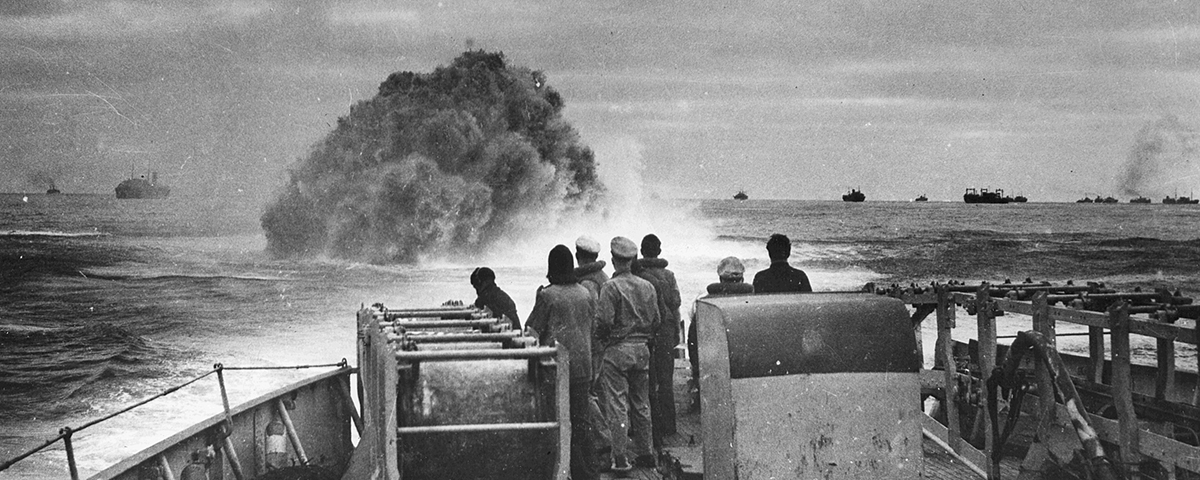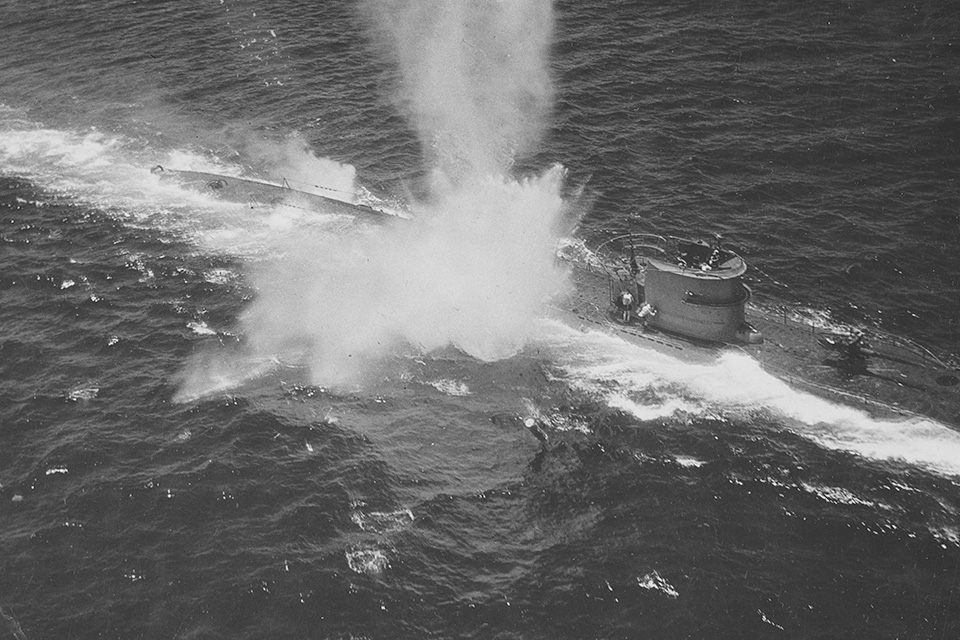Just before noon on June 12, 1943, the crew of the U-118 was enjoying a welcome moment of idleness. Three days earlier they had been sent scurrying northward in response to an urgent call from a sister ship: the U-758 had been caught on the surface, attacked, and seriously damaged by American fighters and torpedo bombers southwest of the Azores. Eleven of its crew were injured, its diesel compartments were awash and its motors stalled, and it was leaking oil. It had taken two days of frantic effort first to locate and then assist the crippled U-boat. A doctor aboard the U-118 was rowed over to tend to the wounded, and spare parts were shipped across.
Leaving the U-758 to limp back home, the U-118 had parted company on the morning of the 11th after taking on 40 tons of oil the U-758 would no longer need on its abbreviated cruise. The U-118 was a tanker—a Milchkuh, or “milk cow,” as the Germans called them—built to refuel and resupply other U-boats at sea; they were Adm. Karl Dönitz’s masterstroke, allowing his hunter-killers to extend their time tracking prey in the mid-Atlantic and avoid the perilous transit to port across the Bay of Biscay, now swarming with Allied air patrols.
Midday on the 12th found the U-118 back at the rendezvous point where it was to meet other boats scheduled for refueling. The sky was cloudless; several men had just left the deck where they had been sunning to go below for a meal. Suddenly a watch on the bridge shouted a warning cry: “Flieger! Flieger!” Out of the sun dove an American F4F Wildcat, its guns ripping across the deck from stern to bow. The U-boat’s commander, Werner Czygan, gave the order to dive and the men on watch duty, three of whom had been hit by the fighter’s bullets, dragged themselves into the conning tower and shut the hatch behind them.
The tower was still cutting through the surface when a TBF Avenger torpedo bomber, following immediately on the Wildcat’s tail, roared 50 feet overhead and dropped four depth charges, which straddled the submarine amidships. Lights blinked off and seawater poured in through the exhaust valves as the U-boat’s engineer frantically called for men to rush forward to restore the boat’s trim. More depth charges exploded around them, knocking out the steering system and wrenching the rudder loose.
With no choice but to fight it out from the now-helpless boat, Czygan ordered the sea water in the ballast blown out to send the sub shooting upward, and shouted to the crew to be ready to man the antiaircraft guns on deck as soon as they broke the surface. But when the men jumped out of the conning tower, they were shocked to see eight planes circling the ship. Nearly every crewman who tried to reach the guns was cut down by the strafing fighters. One of the diesel engines burst into flame as depth charge after depth charge exploded just feet away. Twenty-five minutes into the battle, an Avenger dropped two depth charges that detonated directly under the submarine. A fountain of twisted metal rose into the air. Then the U-118 broke in two, disappearing forever beneath the waves.






